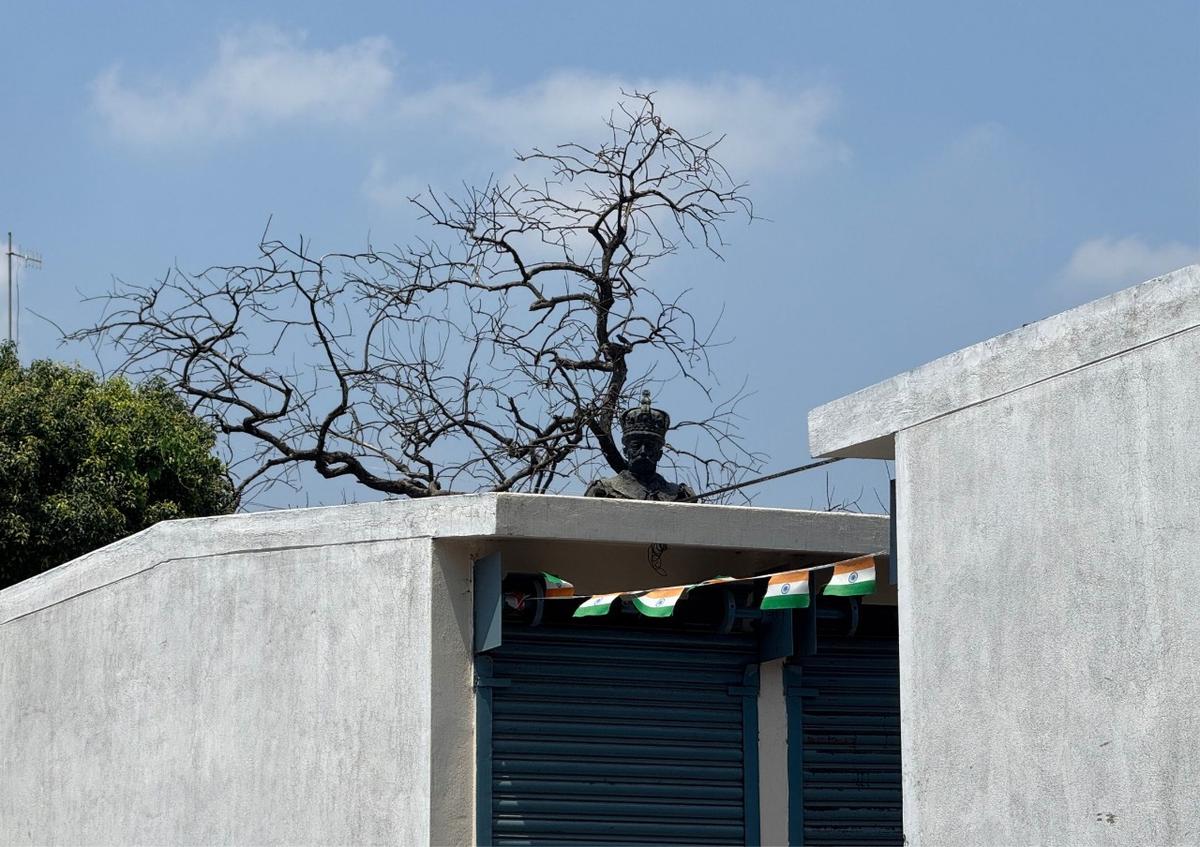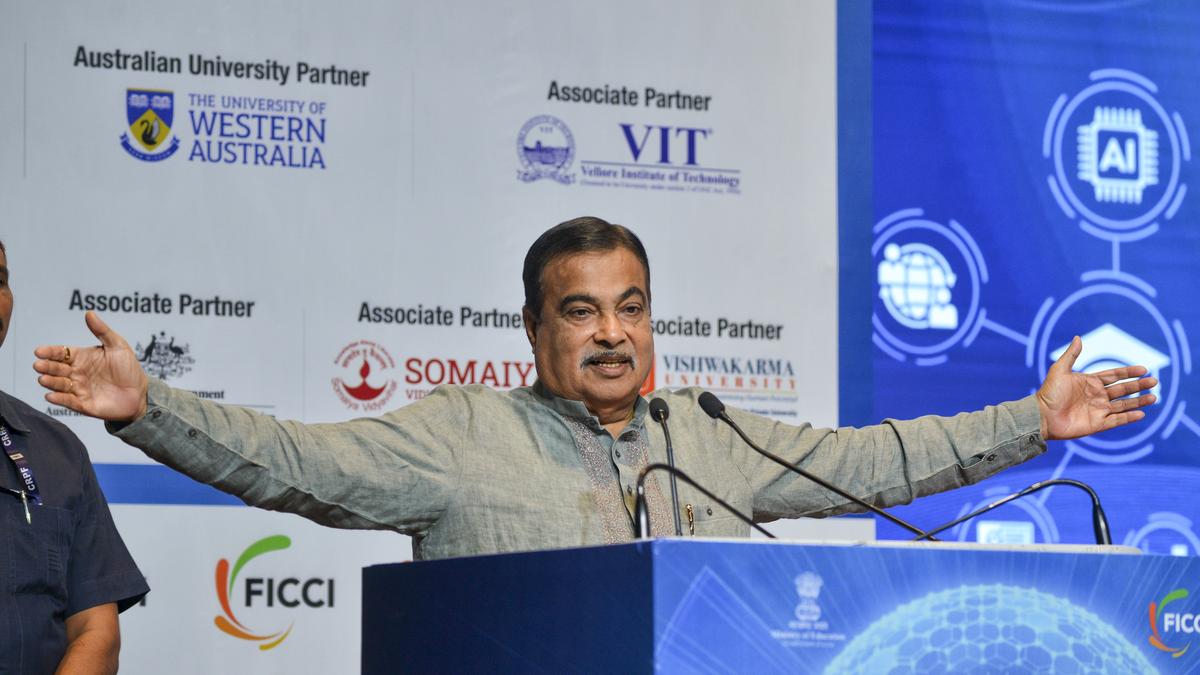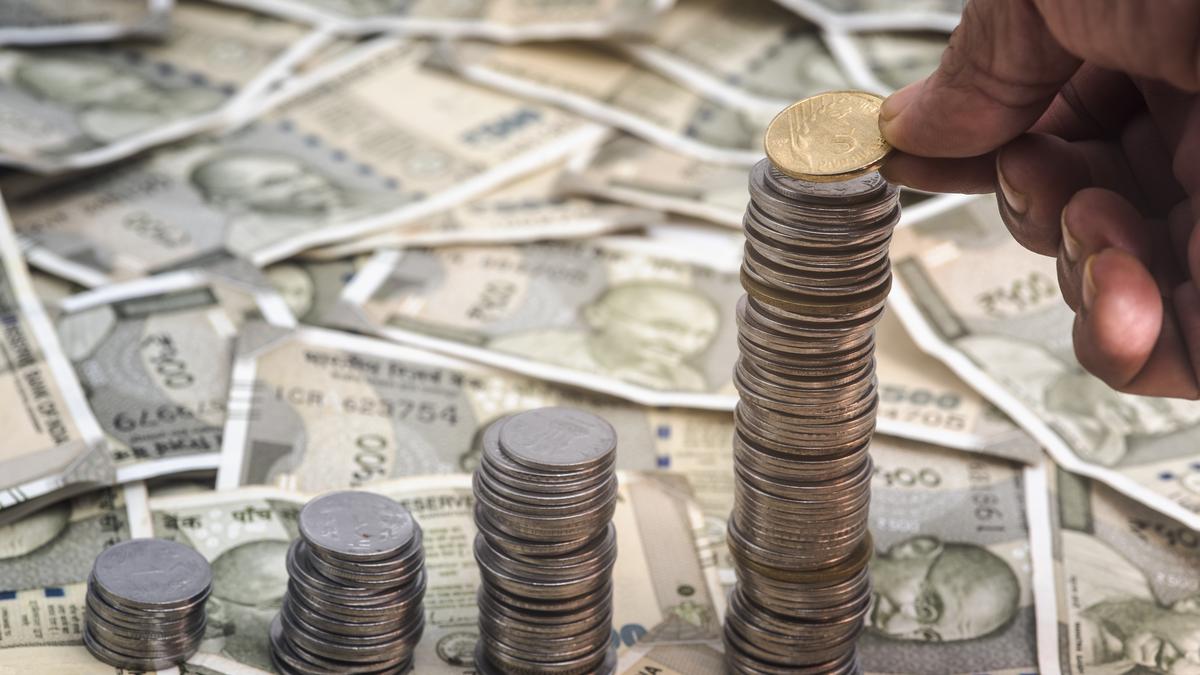
A view of the statue in 2021
| Photo Credit: Sriram V.
Last week, I went to George Town after a considerable hiatus. Walking there, always a challenge, becomes more so for me as practically every nook and cranny is a lesson in history. The area is also, sadly, a perfect instance of how not to maintain a truly heritage precinct. For all that we are repeatedly told that we need to look to Singapore as our role model, in my view, it would be Galle in Sri Lanka or George Town in Malaysia that we need to look to for what can be done with our George Town.
I was also much saddened by the many familiar landmarks that seem to have vanished to make way for tasteless commercial buildings and high rises in an area that can scarcely accommodate any further congestion. I wonder who is responsible for giving permissions for such buildings. But then, as a Commissioner of the Greater Chennai Corporation famously told the High Court of Madras a few years ago, 90% of buildings in George Town are in violation of some code or the other. So perhaps, nobody is really in charge.
The Corporation seems to have added to the chaos in recent times. For a century and more, the rear of the Flower Bazaar police station had a triangle with a statue of King George V in its midst. The statue itself was funded by the Govinddoss Chaturbhujadoss family, wealthy Gujarati magnates of George Town and among the financiers of the Buckingham and Carnatic Mills when they were begun in the 1860s. The statue’s sponsor was Kushaldoss Chaturbhujadoss “on behalf of the citizens of Madras.” The sculptor was Sir Bertram Mackennal. Of Australian origin, he was something of a specialist on George V memorabilia, designing statues, stamps, and coinage.

A view of the statue today
| Photo Credit:
Sriram V.
The statue was erected here in 1913, ostensibly to commemorate the coronation of the King Emperor in 1911 in the grand durbar in Delhi and also to mark the change of name from Black to George Town, which was done in 1905, when as Prince of Wales he visited Madras. A deputation of citizens waited upon the Prince, and requested that Black Town be so renamed.
That then is the history of the statue. Now, I am not so sold on the idea of statues commemorating anyone, leave alone colonial rulers and officials. But if we have decided to retain the statue, we may as well give it some space to breathe and enable passersby to take a look at it. That is how the statue was all along, though its pedestal was put to a variety of not-so-complimentary uses. But in the last few months, some bright spark in the Corporation decided to put up a series of shops all around the statue. These, despite a plaque marking the inauguration of the complex, seem to have not been allotted to anyone and are all shuttered. The alleys between the shops are so narrow that they have become convenient rubbish dumps and open latrines, and the stench is unbearable.
The poorly-designed warren of shops is for evicted hawkers from the NSC Bose Road footpaths – an ongoing battle since the 1950s, with the late Traffic Ramaswami being the most memorable crusader. They may never serve to rid the area of hawkers, but they have managed to completely hide old King George. A brave foray into the lanes revealed the statue hemmed in and with the King Emperor seemingly craning his neck to get a better view of the world outside. The sun has finally set on the British Empire.
(Sriram V. is a writer and historian.)
Published – October 08, 2025 06:30 am IST


